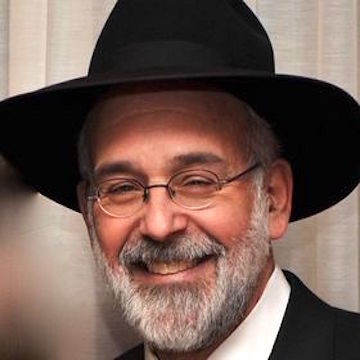Rabbi David Etengoff
336 results total, viewing 61 - 70
|
One of the most famous sources in all Rabbinic literature that discusses the relationship between G-d, man, Torah, and truth is found in Talmud Bavli, Baba Metziah 59b:
On that day Rabbi …
more
By David Etengoff
|
6/1/22
|
|
The prohibition of charging a fellow indigent Jew interest on a loan is one of the many subjects addressed in our parasha, Behar.
While this topic analyzed and expanded upon throughout …
more
By Rabbi David Etengoff
|
5/18/22
|
|
Chapter 23 of our parasha, Emor, known as parashat hamoadim,” contains the Torah-based chagim we encounter throughout the Jewish year.
“And Hashem spoke to Moshe, saying, …
more
By Rabbi David Etengoff
|
5/11/22
|
|
Parashat Kedoshim includes many well-known mitzvot, such as reverence for parents (Vayikra 19:3), the prohibition of lashon hara (19:16), and the obligation to demonstrate love toward other …
more
By Rabbi David Etengoff
|
5/4/22
|
|
I have always found this to be one the Haggadah’s fascinating sentences: “Metichilah ovdei avodah zarah hiyu avotainu, v’achshav karvanu HaMakom l’avodato (in the …
more
By Rabbi David Etengoff
|
4/25/22
|
|
The term, u’chvode Hashem, is found twice in the context of the mishkan: “The cloud covered the Communion Tent, and Hashem’s glory (u’chvode Hashem) filled the Tabernacle. …
more
By David Etengoff
|
3/2/22
|
|
Our parasha, Vayakhel, begins with the explicit linkage of Shabbat and the mishkan. The Rav notes that there are three other passages in the Torah where we find a direct connection between …
more
By Rabbi David Etengoff
|
2/23/22
|
|
The best-known theme in our parasha, Ki Tisa, is the Chet HaEgel (the Sin of the Golden Calf), the most grievous sin in our nation’s storied history. In addition, our sidrah contains the …
more
By Rabbi David Etengoff
|
2/16/22
|
|
One of the best-known verses in our parsha, Terumah, is this: “And they shall make Me a sanctuary (v’asu li mikdash) and I will dwell amongst them (v’shachanti …
more
By Rabbi David Etengoff
|
2/4/22
|
|
The Choshen Mishpat, worn by the Kohane Gadol, is one of the more fascinating bigdei kahuna (garments of the kohanim) described in our parasha, Tetzaveh: “And you [Moshe] shall make a …
more
By Rabbi David Etengoff
|
2/10/22
|

 54.0°,
Mostly Cloudy
54.0°,
Mostly Cloudy 